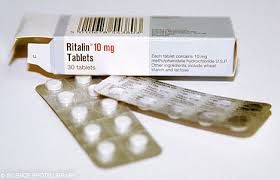5 Tips for Choosing the Right Treatment for Stimulant Addiction

Getting help at a treatment center that offers various types of stimulant treatment is a smart move.
There are many physiological changes that take place in the brain resulting in maladaptive thoughts and behaviors and it may seem like there is no real hope because stimulant addiction leaves a person confused, depressed, and without ambition. This unhealthy state of mind is a common side effect of stimulant addictions. Although they elevate moods for a short time, the lasting effects of major depression are significant signs that treatment is needed.
Treatment for Stimulant Addiction
According to the National Institute on Drug Abuse, “At this time, there are no medications that are FDA-approved for treating stimulant addiction.” Therefore treatment relies on behavioral therapies and counseling interventions to help the person change their thought patterns and cope with daily stressors to live more productively and positively, free from drugs. Formal treatment programs can be provided in an inpatient or outpatient setting and certain considerations may help for choosing the right one.
Recommendations in Choosing the Right Treatment
1. Severity and Poly Substance Abuse
The first step in treatment is always to evaluate the levels of addiction and other determinants. Most stimulant addicts are poly-substance abusers which makes the treatment more complex, but, not impossible. In chronic cases or in those where there is a prior history of relapse, additional treatment services and more intensity may be necessary making an outpatient rehab unsuitable.
2. Co-occurring Health Problems
Serious physical complications or mental health disorders require more specialized and intense treatment and it may be necessary to enroll in an inpatient program. The program must be able to offer safety to addict though a higher degree of immediate access to medical and psychiatric services. Without stability in these areas, the participation of the addict will be severely limited.
3. Program Duration
Program durations for amphetamine addictions should be long enough to get to the “root” of the problem and give the addict time to heal from damages that stimulants can cause. The longer the addict remains in treatment the greater their chances of remaining abstinent and inpatient treatment programs offer the longest treatment durations usually lasting 30 – 90 days.
4. Flexibility
Retention and engagement is a main element of treatment for stimulant addiction. The addict must be able to commit to the program and it may require more flexibility on behalf of everyone to deal with the unique needs of addict.
5. After Care Support
An effective treatment program must be able to provide after care services that help the addict when the formal treatment is over. Without continued support here is a high risk of relapse. These services may include ongoing counseling and therapy needed for the addict and their families, 12-step meetings, or other group sessions.



